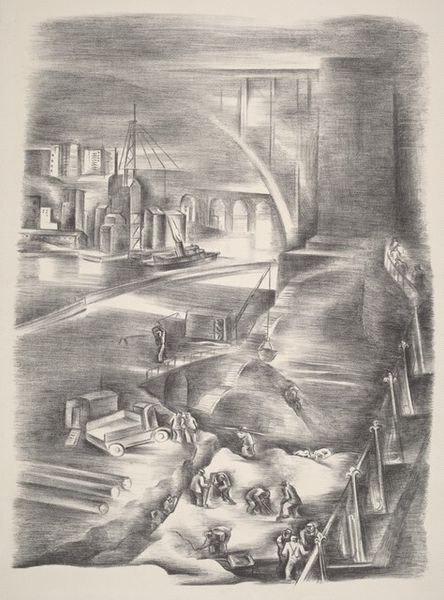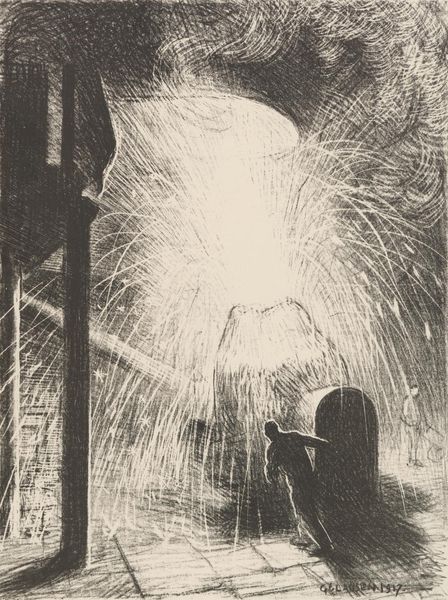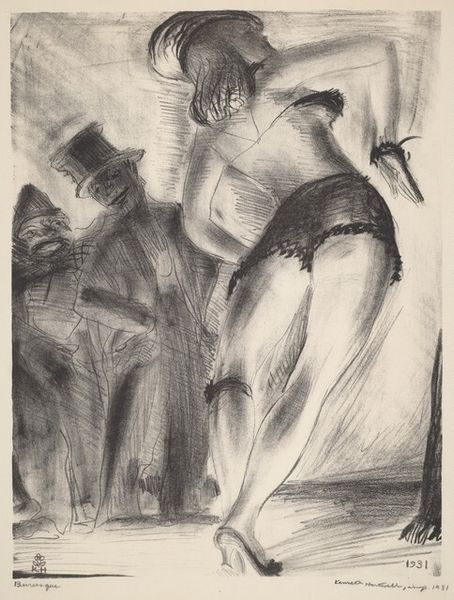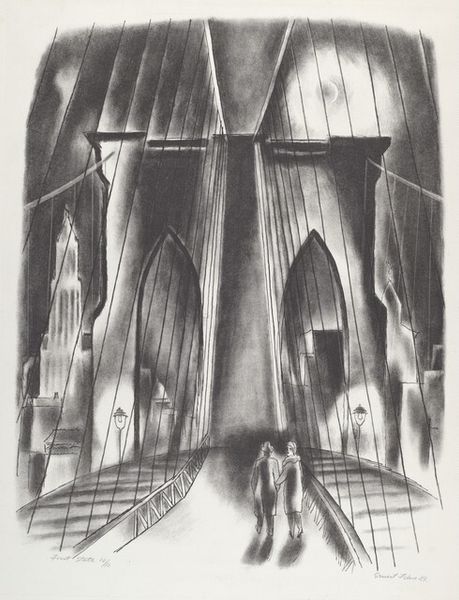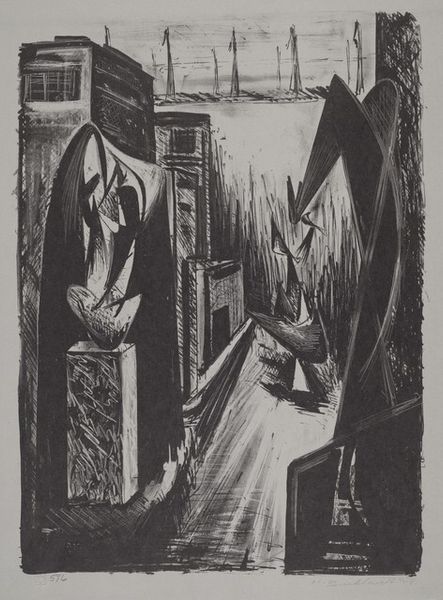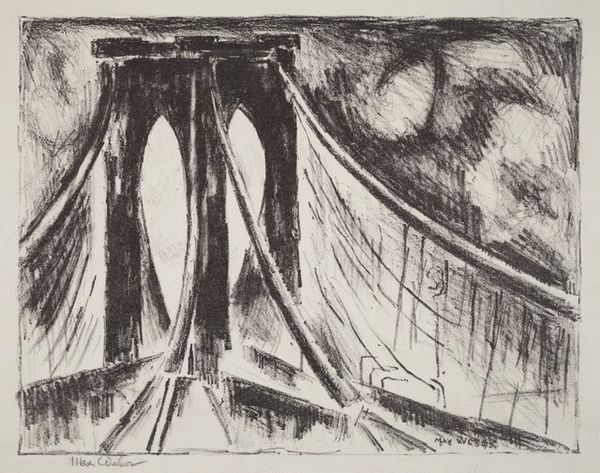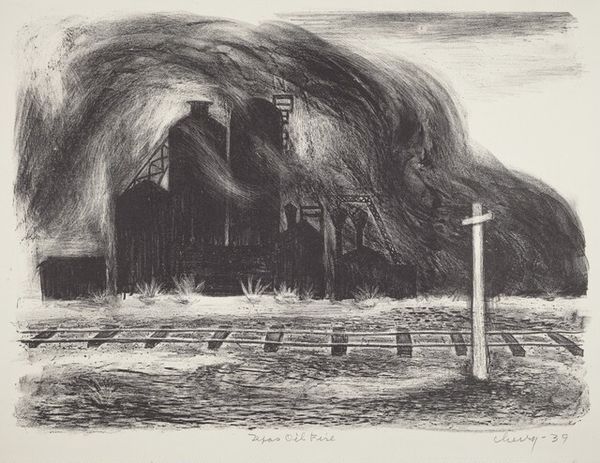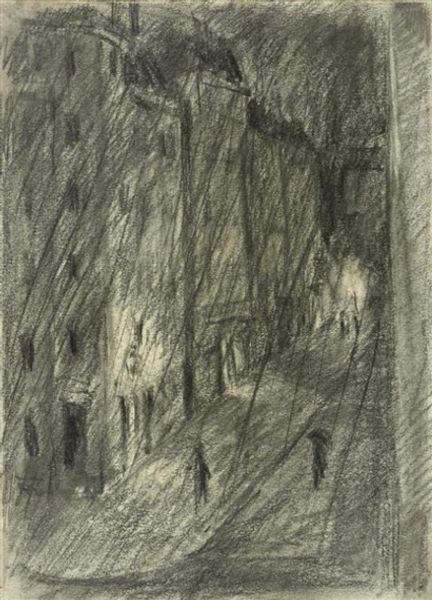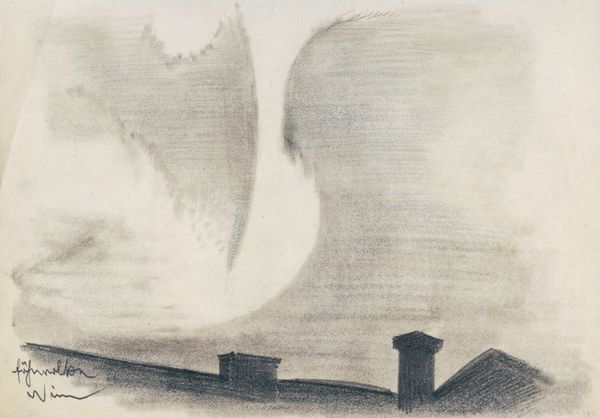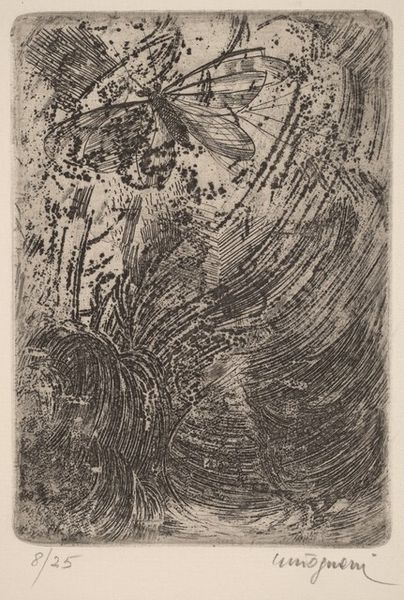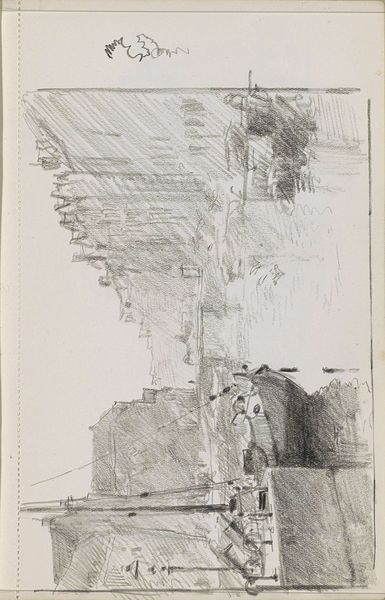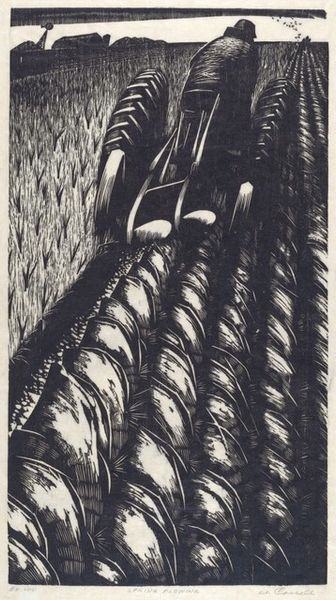
drawing, print, graphite
#
drawing
#
street-art
# print
#
charcoal drawing
#
pencil drawing
#
graphite
#
cityscape
#
realism
Dimensions: Image: 442 x 295 mm Sheet: 583 x 403 mm
Copyright: National Gallery of Art: CC0 1.0
Editor: This graphite drawing is titled "East 13th Street" by Chuzo Tamotzu, created sometime between 1935 and 1943. It’s quite striking – almost like a dreamscape with this explosion of…something, dominating the scene. What is your reading of the formal elements at play here? Curator: It is a powerful composition. Notice first the artist's skillful manipulation of value – the stark contrast between the light emanating from the hydrant and the deep shadows that engulf the surrounding buildings. Consider how that play of light and dark directs the viewer’s eye, creating a dynamic rhythm. Editor: I see what you mean, the darkness really does make the light explode from the page. But what about the sense of motion? That burst from the fire hydrant feels incredibly active. Curator: Precisely. Tamotzu employs line and texture to convey this dynamism. Look at the radiating lines suggesting the water's trajectory. Note also the rough, almost frenzied, application of graphite around the edges, which lends a palpable energy to the entire scene. Observe, as well, how the architecture anchors the composition. Editor: Right, it contains it somehow. Does the architecture offer a structure to what would otherwise be too chaotic? Curator: Indeed. The rigid, vertical lines of the buildings provide a necessary counterpoint to the fluid, chaotic water. Without that architectural framework, the drawing might feel unstructured, even disorienting. It's a considered interplay between order and disorder, wouldn't you say? Editor: I agree. Seeing it from a formalist perspective highlights the push and pull between the elements in the artwork itself, removing so much need to look at external factors. Thank you! Curator: My pleasure. The essence of art often resides within its intrinsic formal language. Looking at it through these lenses shows the essence of form.
Comments
No comments
Be the first to comment and join the conversation on the ultimate creative platform.
